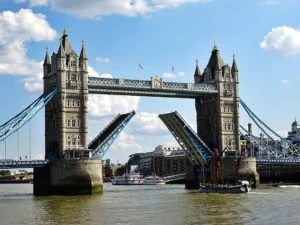Kyoto, Japan’s ancient capital, invites travelers to explore its profound beauty and cultural richness. This Kyoto travel guide captivates with its historic temples, serene gardens, and vibrant cultural experiences, unveiling the many facets of the city. As a must-visit destination, it offers insights into iconic sites and local traditions that make exploring Kyoto truly special.
1. Kyoto’s Cultural Heritage: A Key Part of Your Travel Guide
The Legacy of Kyoto as Japan’s Ancient Capital
Kyoto, formerly known as Heian-kyo, served as Japan’s capital from 794 to 1868. This long history makes the city a living museum, preserving the country’s cultural heritage. Significant political and artistic developments occurred here, especially during the Heian and Edo periods. For more information on Japan’s historical capitals, check out our article on The Rise of Japanese Capitals.
For a deeper dive into the enchanting aspects of Kyoto, check out our detailed article on Enchanting Kyoto: The Ultimate Travel Guide to Japan’s Cultural Heart, which explores the city’s hidden gems and cultural treasures. https://explore-wonder.com/kyoto-travel-guide-explore-japans-ancient-capital/
Architectural Marvels in This Kyoto Travel Guide

Kyoto’s well-preserved buildings, such as the Imperial Palace and Nijo Castle, showcase its architectural evolution. These sites highlight the city’s artistic achievements and provide insights into the lifestyles of different historical periods.
2. Iconic Temples and Shrines to Visit
Kinkaku-ji (The Golden Pavilion)
Kinkaku-ji is one of Kyoto’s most iconic landmarks. Completed in the late 14th century, this Zen Buddhist temple is known for its stunning gold leaf exterior. The pavilion’s reflection in the surrounding pond creates a breathtaking view. For more details, visit our Temple Guide.
Fushimi Inari Taisha: A Must-See Destination
Fushimi Inari Taisha is famous for its thousands of red torii gates. The pathway winds its way up Mount Inari, lined with vibrant gates inscribed with donor names, providing insight into Shinto religious practices.
3. Culinary Delights: A Taste of Kyoto
Kaiseki Cuisine: An Immersive Experience

Kyoto’s dining scene is renowned for kaiseki, a multi-course meal highlighting seasonal ingredients and meticulous presentation. Kaiseki offers an immersive experience in Kyoto’s culinary artistry. For a deeper dive into Japanese cuisine, visit Noma’s Guide to Kaiseki.
Yudofu: A Traditional Dish
Yudofu is a traditional Kyoto specialty made from tofu simmered in light broth. This simple yet flavorful dish exemplifies the city’s emphasis on vegetarian cuisine.
Matcha Sweets: A Delicious Treat
Kyoto’s high-quality matcha features in various sweets, from matcha ice cream to cakes. These treats highlight the city’s rich tea heritage and provide delightful souvenirs.
4. Natural Beauty: Scenic Landscapes to Explore

Arashiyama Bamboo Grove: A Natural Wonder
Arashiyama Bamboo Grove: A Natural Wonder
The Arashiyama Bamboo Grove is a mesmerizing forest of towering bamboo stalks. Walking through this grove offers a serene and immersive natural experience, making it a must-visit spot in your Kyoto travel guide.
Philosopher’s Path: A Scenic Stroll
The Philosopher’s Path is a picturesque walking trail that follows a cherry tree-lined canal. This scenic route is especially beautiful during cherry blossom season and is a perfect place for reflection, an unforgettable experience in any Kyoto travel guide.
5. Cultural Immersion: Embracing Traditions in Kyoto
Traditional Tea Ceremonies
Participating in a traditional tea ceremony, or “chanoyu,” is a profound way to experience Japanese culture. This ritual emphasizes harmony, respect, and mindfulness. Learn more about the Art of Tea in our dedicated section.
Kimono Experience
Wearing a kimono in Kyoto provides a tangible connection to the city’s historical charm. Visitors can rent kimonos from various shops, enhancing their immersion in the cultural atmosphere. It’s a must-try activity recommended in any Kyoto travel guide.
6. Festivals and Events: Celebrating Local Traditions
Gion Matsuri: A Festival of Color
Gion Matsuri: A Festival of Color
One of Kyoto’s most celebrated festivals, the Gion Matsuri takes place every July, featuring elaborate floats and vibrant street parades. Its origins date back to the 9th century, showcasing the city’s enduring cultural practices. Don’t miss this unique event in your Kyoto travel guide
Kiyomizu-dera Night Illumination
During special times of the year, Kiyomizu-dera is illuminated at night, creating a magical atmosphere. The temple and its landscape are bathed in soft, colorful lights, providing a unique perspective. This is a special highlight in any Kyoto travel guide.
Conclusion
Kyoto, with its rich history, stunning architecture, vibrant culture, and delicious cuisine, offers a unique travel experience. Whether you’re exploring ancient temples, indulging in traditional dishes, or immersing in local customs, this Kyoto travel guide helps you find a deep connection to Japan’s cultural heritage in this enchanting city. For more travel insights, check out Travel Japan.






